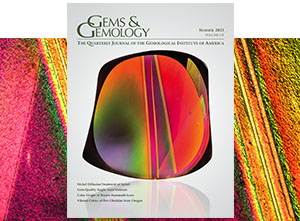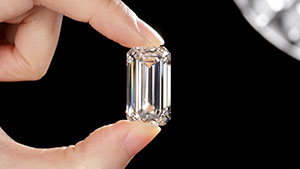General Questions:
1-800-421-7250

A sphere of Armenian turquoise with natural brown matrix material mimics planet Earth.
Read More
Examination of a heart-shaped ruby reveals a zinc glass filler.
Read More
An overview of the Summer 2023 Gems & Gemology content.
Read More
Reports on a newly discovered treatment process for producing a deep blue color in natural spinel and proposes identification criteria.
Read More
A very large baroque white pearl is further examined in the Mumbai laboratory due to its suspicious heft.
Read More
The Hong Kong laboratory recently examined a Burmese star ruby incorporating a significant amount of bismuth glass.
Read More
A look at the largest CVD diamond GIA has encountered to date.
Read More
GIA researchers report on a new nickel-diffusion treatment used to modify color in spinel and present criteria for identification.
Read More
Characterizes turquoise treated with an inorganic additive that dramatically improves the luster and color of low- and medium-quality material.
Read More
Testing identifies a “red corundum” sample as red-dyed spodumene.
Read More